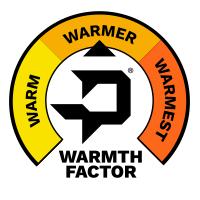
Which Body Parts Need the Most Protection From the Cold?
If you’ve ever stepped out into the cold and wondered why certain parts of your body get cold before others, such as your nose and fingers, there’s a reason for that. It’s because these areas lack muscles and fat to keep them warm, and it takes longer for blood to circulate to these areas and provide warmth. This means there are certain body parts that need more protection from the cold—mainly your extremities. Learning how to protect these extremities may save you an arm and a leg.
Hands and Feet Suffer the Most
As we touched on earlier, blood circulation plays a big role in keeping your body warm, and when your body gets cold, the first thing it will do is restrict blood flow to the extremities. This is because your body is trying to move heat toward your vital organs and maintain a normal internal temperature. Additionally, the capillaries in your fingers and toes are very thin. As a result, your hands and feet get cold first, which means that these are the body parts that need the most protection from the cold.
Proper layering prevents the torso area from getting cold so that your body doesn’t need to take blood from other places to regulate itself. Of course, you should always wear protective cold-weather gear, like gloves, socks, and boots, but heating your core is a huge help.
Frostbite Easily Develops on the Face
Your ears, nose, and cheeks can develop frostbite very easily for several reasons. Remember that when you’re cold, your blood will move toward your torso, and while your face does have a decent number of vessels to pull from, they’re also very thin. The problem here is that the lack of blood flow makes the area vulnerable. Pair this with the fact that there’s very little fat and muscles in these areas, and you have a recipe for frostbite.
Part of the reason why so many people get frostbite on their faces is that they don’t know how to protect it. We hear plenty about the importance of wearing gloves and socks but not much about how to protect your face. Neck gaiters and scarves can protect your face from the cold, but be sure to choose items with a breathable material. If the fabric is not breathable, the moisture from your breath will build up on it and make you colder.
The Neck and Head Need Warmth Too
While it’s a myth that you lose 40 percent of your body heat from your head, protecting the area is still important, as is protecting your neck. The arteries and veins in your neck and head aren’t as deep or protected by skin and fat as the ones in your torso. When you keep your head and neck warm, you keep your torso warm, which helps you maintain a normal core temperature. Once again, wearing head and neck protection is critical, but maintaining your core temperature can prevent vasoconstriction from occurring in more vulnerable parts of the body.
Before you head out on your next cold-weather adventure, shop PolarMax’s collection of men’s thermals. Our microfleece and merino wool thermals will help you protect the most vulnerable parts of your body so that you can stay safe and have fun.

